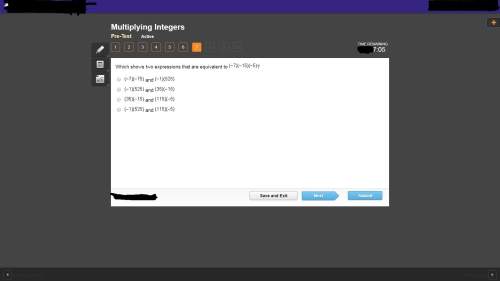
Mathematics, 06.11.2020 18:30 thisbegaby
100 Points! Please answer WHOLE question
Equilateral Equiangular Triangle Rotation to prove SAS Congruence
First, construct a triangle as indicated by your choice in step 1 on a coordinate plane. For example, if you chose to use an obtuse scalene triangle translation to prove SSS Congruence, then you will construct an obtuse scalene triangle. Make sure to measure your triangle's angles and sides. You can use the concept of distance and slope to ensure your triangle satisfies the criteria indicated by your choice. Write down the original coordinates of this triangle.
Next, identify and label three points on the coordinate plane that are the transformation of your original triangle. Make sure you use the transformation indicated within the scenario you selected. For example, if you chose to use an obtuse scalene triangle translation to prove SSS Congruence, then you complete a translation of your triangle. Remember, you only need to complete one transformation on your triangle. Write down these new coordinates for this second triangle.
If you chose Equilateral Equiangular Triangle Rotation to prove SAS Congruence, use the coordinates of your rotation to show that the two triangles are congruent by the SAS postulate. You can use the distance formula to show congruency for the sides. To show an angle is congruent to a corresponding angle, you can use slope or your compass and straightedge. (Hint: Remember when you learned how to copy an angle?) You must show all work with the distance formula for the corresponding pair of sides, and your work for the corresponding angles, to receive full credit.
Equilateral Equiangular Triangle Rotation to prove SAS Congruence
Answer the following questions:
How many degrees did you rotate your triangle?
In which direction (clockwise, counterclockwise) did it move?
What rotation rule did you apply to your triangle?
What other properties exist in your triangle? Discuss at least two theorems you learned about in this module that apply to your triangle. Make sure to show evidence by discussing your triangle's measurements.
Did your triangle undergo rigid motion? Explain why.

Answers: 2


Other questions on the subject: Mathematics


Mathematics, 21.06.2019 17:10, sofiakeogh1487
If angle 2=3x +1 and angle 3=2x +4what is angle 2
Answers: 1


Mathematics, 21.06.2019 19:30, dolltan
The table below represents the displacement of a fish from its reef as a function of time: time (hours) x displacement from reef (feet) y 0 4 1 64 2 124 3 184 4 244 part a: what is the y-intercept of the function, and what does this tell you about the fish? (4 points) part b: calculate the average rate of change of the function represented by the table between x = 1 to x = 3 hours, and tell what the average rate represents. (4 points) part c: what would be the domain of the function if the fish continued to swim at this rate until it traveled 724 feet from the reef? (2 points)
Answers: 2
You know the right answer?
100 Points! Please answer WHOLE question
Equilateral Equiangular Triangle Rotation to prove SAS Con...
Questions in other subjects:













